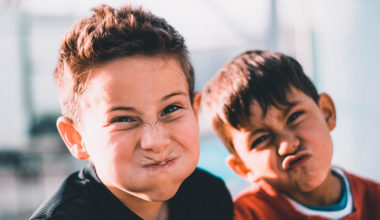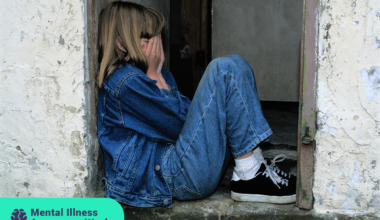Updated on 9/14/2022
Everyone knows what bullying is, but many people don’t consider that there are different types of bullying. Bullying takes many forms. We commonly think about its impact on children, but adult bullying is just as prevalent. From physical and verbal bullying to social and cyberbullying, a bully’s unwanted, aggressive, abusive behavior can sometimes be glaringly obvious to spot or it might be more subtle.
At the most basic level, all types of bullying intentionally and repeatedly cause discomfort or harm to another individual. People who are bullied are generally unable to defend themselves and typically aren’t in a position of power, according to the American Psychological Association (APA).
In order to prevent or stop it, we must be aware of the signs and types of bullying out there. All forms of bullying can inflict harm. Bullying can damage someone’s social reputation, peer and interpersonal relationships, self-esteem and cause several other mental health conditions.
1. Physical Bullying
This is the most overt type of bullying behavior. It’s easier to spot and involves harming a person’s body or possessions. Physical bullying can take the form of hitting, tripping, pushing, kicking, pinching, or damaging another person or their things. This form of bullying often happens by a person or group that’s stronger and bigger than their victim.
Research shows that boys are more likely to be involved in physical bullying than girls.
Effects of physical bullying
Physical bullying can cause both short- and long-term physical harm. It can also result in psychological effects like low self-esteem, anxiety, and depression.
2. Verbal Bullying
Verbal bullying includes saying or writing mean words to or about someone. It can include name-calling, verbal abuse, insults, threats, teasing, intimidation, inappropriate comments, homophobic comments, rumor spreading, racist remarks, or verbal abuse.
In studies, we’ve found that using insults, a part of verbal bullying, is the most common type of bullying that 7 to 10-year-old boys face.
Effects of verbal bullying
Verbal bullying behavior may start off harmlessly or in a joking context, but it can escalate quickly and cause emotional distress. Because it often happens when an adult or authority figure isn’t present, verbal bullying can be incredibly harmful and cause anxiety.
“Bullying in any form is detrimental to the individual being bullied. Verbal bullying can be just as harmful as it consists of daily teasing, name-calling, and belittling. It can take a toll on the mental well-being of the person being bullied. Verbal bullying is harder for others to recognize as it occurs outside the confines of authority (teachers, supervisors at work). Additionally, verbal bullying can come from an authority figure. This creates a ‘trapped’ feeling by the victim.”
3. Social Bullying
It can sometimes be harder to recognize social bullying, as it involves harming someone’s reputation or relationships. Also referred to as relational aggression or relational bullying, this type of bullying behavior might involve leaving someone out on purpose, telling people not to be friends with another person, spreading rumors, and/or intentionally embarrassing someone in public.
Most people associate this type of bullying with the “mean girl” or “queen bee” in social circles. Interestingly, despite both terms being overtly gender-specific, research shows that while girls tend to be the victims of this type of bullying, both girls and boys equally can be the perpetrators.
Effects of social bullying
Social bullying can lead to depression, isolation from others, extreme loneliness, and social anxiety.
4. Cyberbullying
Cyberbullying can be overt or covert, as it entails bullying behaviors through digital technologies like computers and smartphones. Because of the nature of technology, cyberbullying can happen at any time, day or night, leaving little room for escape for the victim being harassed.
Cyberbullying can include:
- Abusive or threatening texts
- Emails
- Direct messages
- Social media posts
- Comments on social posts
- Deliberately excluding a person online
- Spreading rumors online
- Imitating others by accessing and using login information
While in-person, more traditional bullying is still more common, cyber bullying is becoming more and more prevalent. For one thing, cyberbullies are less likely to be caught since it’s easy for them to hide their identity. According to research, an estimated 37% of adolescents aged 13 – 17 years old have been cyber bullied at some point.
Effects of cyberbullying
Cyberbullying can be particularly harmful because there’s no relief from it. It doesn’t cease when the person leaves school or wherever their bully is. It can cause anxiety, depression, social isolation, and self-esteem issues.
“Cyberbullying is something that’s become more and more commonplace as it’s an easy medium to use to continue the ‘in-person’ bullying that occurs. Using social media and other messenger apps makes it incredibly easy to continue to harass an individual. This leaves the individual feeling like they cannot escape from the situation. Speaking out about the bullying to someone or seeking therapy will help in working through the bullying and its lasting effects.”
5. Prejudicial Bullying
Prejudicial bullying targets someone’s ethnicity, race, religion, or sexual orientation. Generally, it involves a systematic belief that a marginalized population is lesser than others.
We need much more research specifically looking at the prevalence of prejudicial bullying, but what we do know is that certain minority groups (particularly ethnic and sexual) experience racist bullying and sexual bullying by their peers much more often.
Effects of prejudicial bullying
When people are bullied based on their minority group, the effects can include depression, anxiety, feelings of worthlessness, and a tendency to isolate.
“Prejudicial bullying is bullying based on a person’s race, ethnicity, sexual orientation, etc. There’s a touch of racism there, so microaggressions and macroaggressions occur. The bully targets the stereotype and continues to perpetuate it through harmful means.”
6. Sexual Bullying
Sexual bullying is exactly what it sounds like. It can be done through cyberbullying or face-to-face direct bullying. Both involve using sexual name-calling, spreading rumors of a sexual nature, making inappropriate jokes, sharing intimate photos or videos, or even physically touching, grabbing, or groping someone without permission.
Sexual bullying might be one of the most common types of bullying. Recent studies found that 81% of women have experienced some form of sexual bullying, harassment, or assault at some point in their life. Perhaps surprisingly, the prevalence of men being sexually bullied is relatively high. The same study showed that 43% of men had also experienced some form of sexual bullying.
Effects of sexual bullying
Sexual bullying can lead to severe depression and social anxiety and cause someone to have trust issues in the future.
Preventing Bullying Behaviors
There are many different types of bullying to be aware of. Regardless of which type you’re experiencing or witnessing, it’s important that we all work together to learn how to prevent bullying.
The physical and emotional effects of bullying can include:
- Higher risk for developing depression and anxiety
- Increased and more frequent feelings of sadness and loneliness
- Changes in sleep patterns, including insomnia or exhaustion
- Changes in eating patterns and appetite
- Loss of interest and desire in activities
- More health complaints
“When bullying occurs, there are ways to help with those situations. Always speak out to an authority figure to let them know what’s going on. When possible, stay within your support system group to minimize in-person bullying. Take screenshots of any online bullying that occurs and report it to the affiliated service. Finally, work with a therapist to learn the coping strategies and boundaries needed to deal with the bullying situation.”
You can do your part to prevent various types of bullying by:
- Confronting a bully if you see someone being harassed
- At work: Talking to a supervisor or your HR department if you witness workplace bullying
- At school: Reaching out to a teacher, counselor, parent, school administrator, or any other adult who can help
- Speaking up
- Reporting online bullying to the platform you find the abuse posted on
- Documenting online attacks
- Recording a bully’s behavior or attack
- Blocking or unfriending bullies on social media
- Confiding in a friend or someone you trust
- Calling the police
- Getting therapy
It doesn’t matter which of the types of bullying you’re dealing with. If you’re a victim or a witness, bullying is never OK. If you need help, ask. If you see something, say something. When we stand together, we can prevent bullying.
Turn to Talkspace for online therapy if you need extra support when dealing with bullying, whether it is affecting you or a loved one. The effects of bullying can be long-lasting making it incredibly important to seek out support.
Sources:
1. Bullying. https://www.apa.org. https://www.apa.org/topics/bullying/. Published 2022. Accessed July 19, 2022.
2. Lansford J, Skinner A, Sorbring E et al. Boys’ and Girls’ Relational and Physical Aggression in Nine Countries. Aggress Behav. 2012;38(4):298-308. doi:10.1002/ab.21433. https://onlinelibrary.wiley.com/doi/10.1002/ab.21433. Accessed July 19, 2022.
3. Iossi Silva M, Pereira B, Mendonça D, Nunes B, Oliveira W. The Involvement of Girls and Boys with Bullying: An Analysis of Gender Differences. Int J Environ Res Public Health. 2013;10(12):6820-6831. doi:10.3390/ijerph10126820, https://www.mdpi.com/1660-4601/10/12/6820. Accessed July 19, 2022.
4. Patchin J. Cyberbullying Data 2019 – Cyberbullying Research Center. Cyberbullying Research Center. https://cyberbullying.org/2019-cyberbullying-data. Published 2019. Accessed July 19, 2022.
5. Menesini E, Salmivalli C. Bullying in schools: the state of knowledge and effective interventions. Psychology, Health & Medicine. 2017;22(sup1):240-253. doi:10.1080/13548506.2017.1279740. https://www.tandfonline.com/doi/full/10.1080/13548506.2017.1279740. Accessed July 19, 2022.
6. National Studies | Stop Street Harassment. Stop Street Harassment. https://stopstreetharassment.org/our-work/nationalstudy/. Published 2019. Accessed July 19, 2022.
7. Rivara, F., Menestrel, S., Prevention, C., Board on Children, a., Justice, C., Education, D., Division, H. and National Academies of Sciences, a., 2022. Consequences of Bullying Behavior. https://www.ncbi.nlm.nih.gov/books/NBK390414/. Accessed 14 September 2022.
Talkspace articles are written by experienced mental health-wellness contributors; they are grounded in scientific research and evidence-based practices. Articles are extensively reviewed by our team of clinical experts (therapists and psychiatrists of various specialties) to ensure content is accurate and on par with current industry standards.
Our goal at Talkspace is to provide the most up-to-date, valuable, and objective information on mental health-related topics in order to help readers make informed decisions.
Articles contain trusted third-party sources that are either directly linked to in the text or listed at the bottom to take readers directly to the source.




